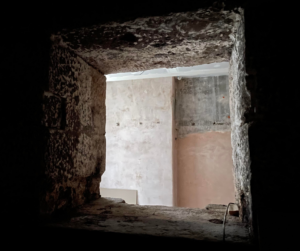A good investment criteria will help you to sift through opportunities in a more scientific manner rather than by instinct or by what feels right. It is not a strategy, it is a list of specific criteria with which to assess each potential project to ensure you don’t spend too much time & money in the wrong place.
When we want to choose a new TV most of us start with finding out what the latest technology advances are and then we define a set of criteria to compare different options. Without defining those criteria you could end up with a TV that doesn’t actually give you what you need. It is the same with Commercial property investment.
It is so important to “begin with the end in mind”, as Stephen Covey advises in his book seven habits of highly effective people. It is fine if you are expecting to have an infinite life, but most of us back on planet earth have a limited amount of time to achieve the things that are important to us. So establishing goals, a strategy and investment or project criteria are all important.
A summary of our top 5 Investment Criteria for Commercial Investments.
- A minimum expected contribution level from each project.
- Lot size
- Location
- ROI
- Potential to scale.
So, first you need to work out your objectives, develop a strategy and then build an investment Criteria to make choices easier. A good investment criteria will help you decide what is a good opportunity and what is actually a distraction. This may not seem important at the start of your business while you are throwing mud on the wall to see what sticks, but in the long term detours can consume large parts of your life.
Over the years we have developed our key strategy investing in Multi-let Commercial Property. In turn we have built up a set of Investment criteria to evaluate potential projects. Here are those key investment criteria with a little more detail.
1. Set a minimum expected contribution level from each project
You might want to decide that each investment must have the capacity to make a minimum annual contribution. That might be £10K, £20K or even £100K+ per project. If your base level contribution does not seem achievable on a potential project then you move on. Of course the more deal flow you have the easier it is to move on. In this life your resource of time is finite, once you have used it you can’t get it back.
2. A minimum lot size
A certain type of investment model may only work with a minimum size of project. For example you may work out that an HMO investment with less than 5 bedrooms does not really work for your company structure. It is the same with commercial. We have found our model really works best with a minimum of 10,000ft2 per site and this is increasing as we grow. After a certain size the same resources can support a site up to 3 times the size.
3. Location
Geographical location is important particularly if you are an active investor. To add value it would be easier to have the project nearby rather than hours away. However a passive investor is less affected by this and may very rarely, if ever visit their investments. One of our first developments/investments was a speculative house build that was several hours drive and a ferry ride away. It took at least a day to get there, believe it or not this turned out to be a pretty stupid idea.
4. ROI.
Return on investment, return on cash invested, yield or however you measure the return on an investment is surely a critical factor for most. Commercial property returns can vary wildly from negative returns to in excess of 100%. Our target is that the project must have the potential to get to at least 25% ROI. What is yours?
5. Potential to Scale.
Similar to the reasons for a minimum lot size, scale matters. Can you take this model to other locations and build a team to help you deliver the end product to your customers, which you will need I am afraid. Fairly early on I realised we needed to grow to a certain size for me to truly get my time back. If that is also important for you, make sure it is a consideration when you are evaluating opportunities.
An example of container storage.
An example of where investment criteria would be critical is when considering making an investment in a location for container storage. At first it seems simple, just get hold of some land, shove down some 10 & 20 foot containers, pop up a fence, put up a website and sit back while the money rolls in. However you need to ask some questions first: What is the optimum number of containers for you to operate efficiently? Are you going to spend time with customers or hire someone else to do it and is the site big enough to actually pay for that help?
At first all deals that can make money look great but when you analyse them against your investment criteria you can be much more selective.
Please take the time to work on your investment criteria, but remember to start with your goals and objectives first. The chances are that our investment criteria is not going to be the same as your own but hopefully it will give you some broad ideas to develop your own investment criteria.
Please share any investment criteria that have served you well in the comments below.






